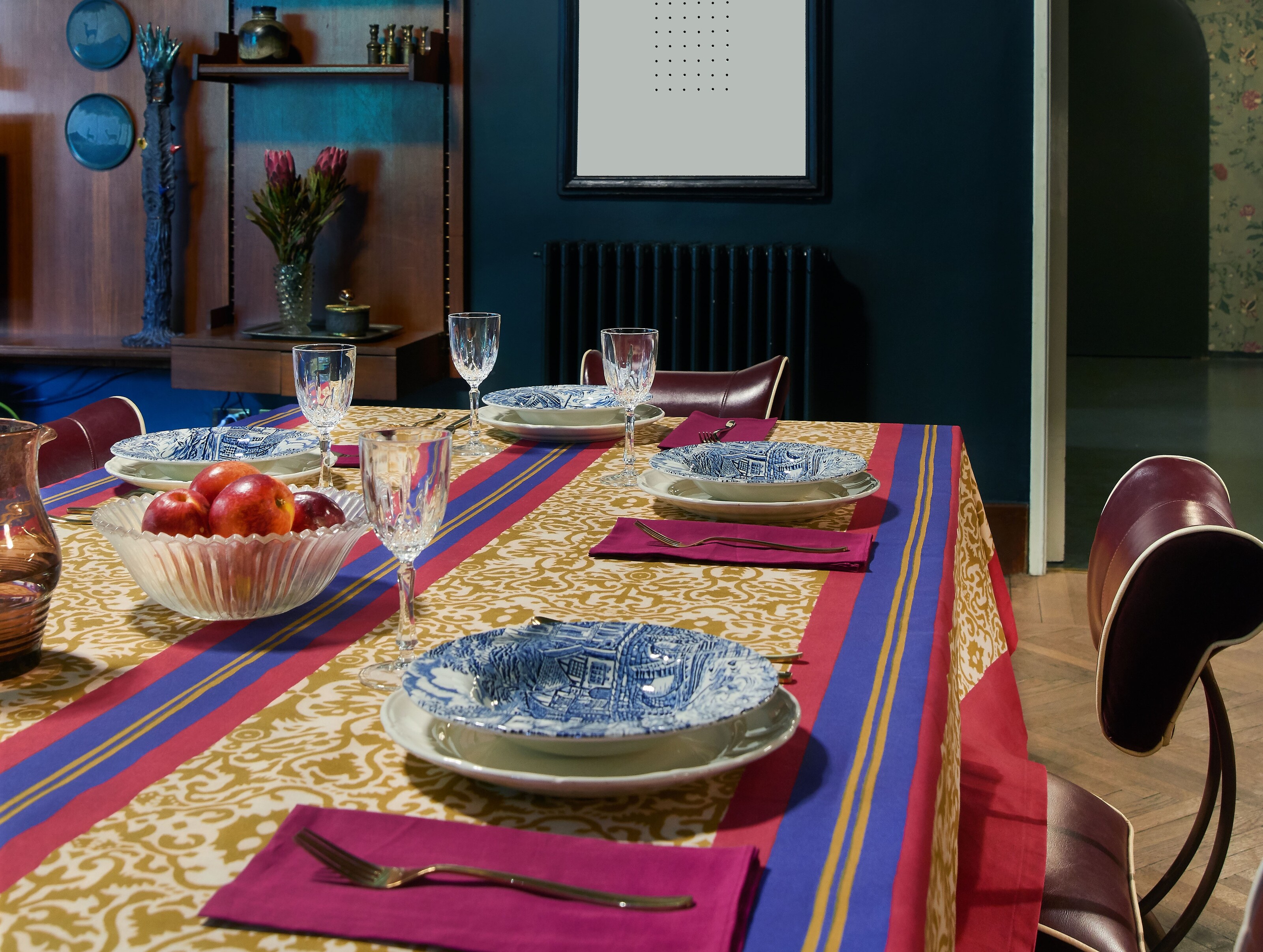
You might think you know the basics for setting the table, but it can actually be a little more complicated than you initially think. But getting to grips with the essentials leaves you in good stead to elevate your dinner parties to the next level.
'Every table setting, no matter its simplicity, has a story to tell,' says Atelier Saucier founders, Nikki Reed and Staci Inspektor. 'Think of it as assembling an outfit. Begin with your base layers and embellish them with delightful accessories. Introduce vintage or second-hand pieces to enrich the narrative; even a vintage trinket dish can serve as a unique salt cellar. Each element contributes to the evolving story of the setting, weaving a charming and captivating tale for all present.' With that in mind, here are the non-negotiable essentials when it comes to setting the dining room table.
1. Get the cutlery order right
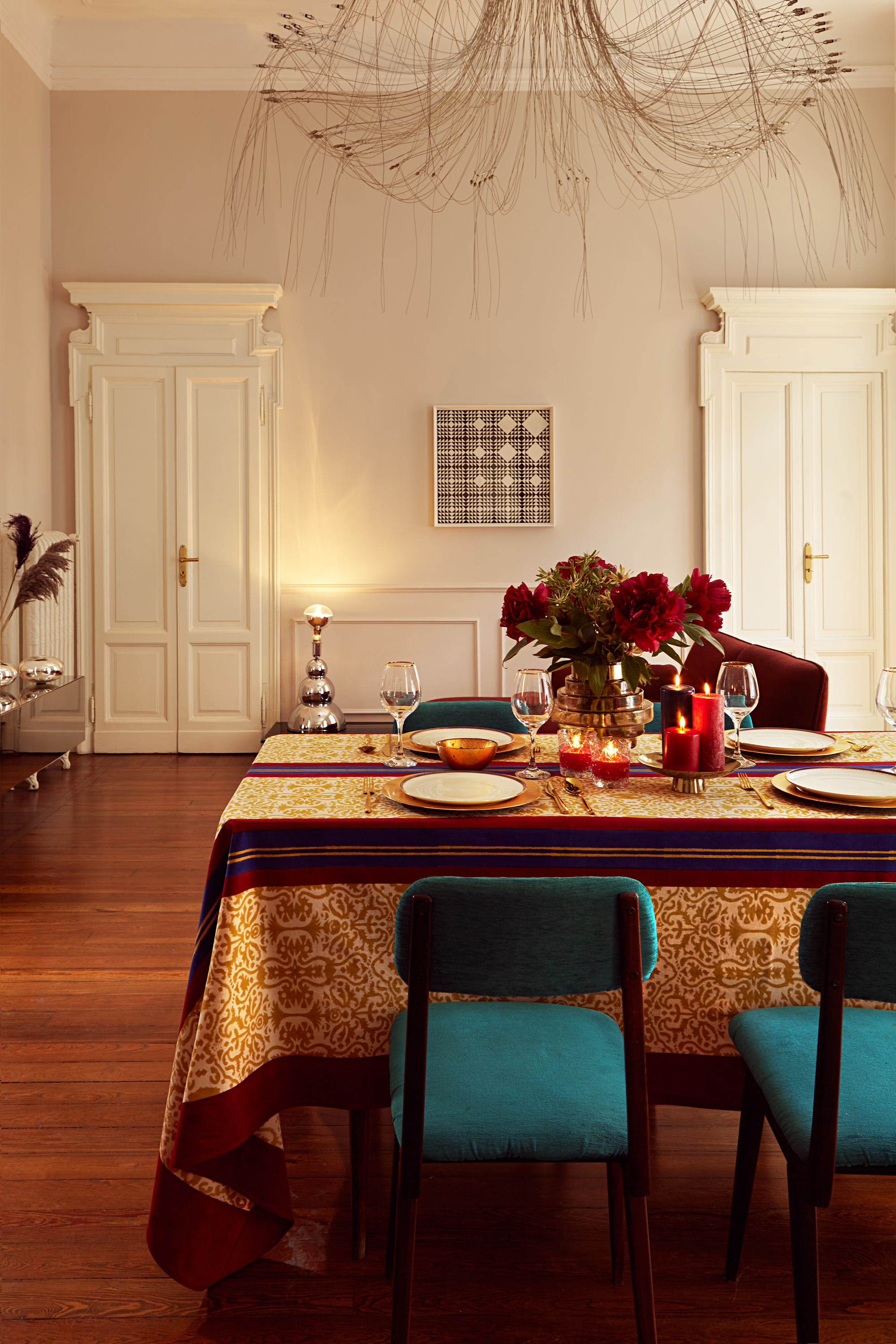
Getting your cutlery right is the basics when it comes to laying the dining table. Whether you're having a formal dinner party or spontaneously hosting unexpected guests, there are some basic rules to learn around cutlery, but once you understand the bare minimum, the rest of the tablescape will follow with ease.
'The way to lay cutlery is about balance and flow,' says Artem Kropovinsky of Arsight, an interior design studio based in New York. 'Knives and spoons are to be situated to the right, forks to the left, and always face the knife blade towards the plate.' Spoons for dessert should be placed above the plate. If you're having more than one course, start with your starter cutlery on the outside with the larger pairing on the inside, next to the plate. Basing your ordering on the sequence of the meal is rule number one about cutlery.
2. Perfectly fold your napkin
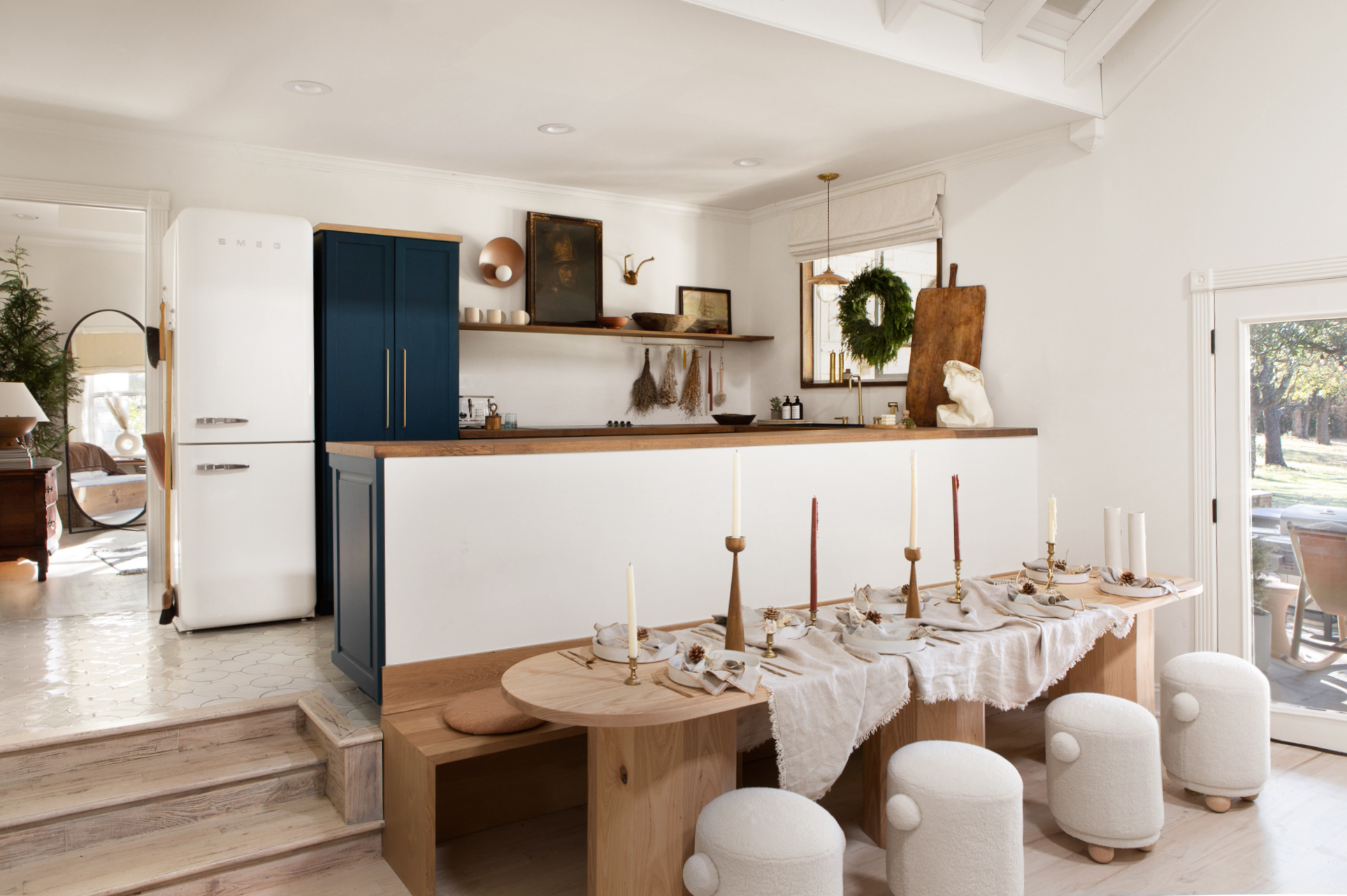
A napkin is a simple but necessary addition to any basic dining table but don't just hand out unsightly paper towels around the dining table. Instead, incorporate it into your tablescape and get creative, looking at dining table trends to inform how you fold your napkin.
A well-placed napkin can look like the finishing touch on your dining table. ‘The simplest yet still chic place setting features a linen napkin,’ says stylist and tablescape designer, Liz Barbatelli. ‘Fold the napkin in fourths and then fold in half and place under the fork to the left of the plate.’ Alternatively, a fabric napkin looks decorative and aesthetically pleasing when placed in a simple napkin ring and laid delicately over the plate.
3. Basic tablecloth setting
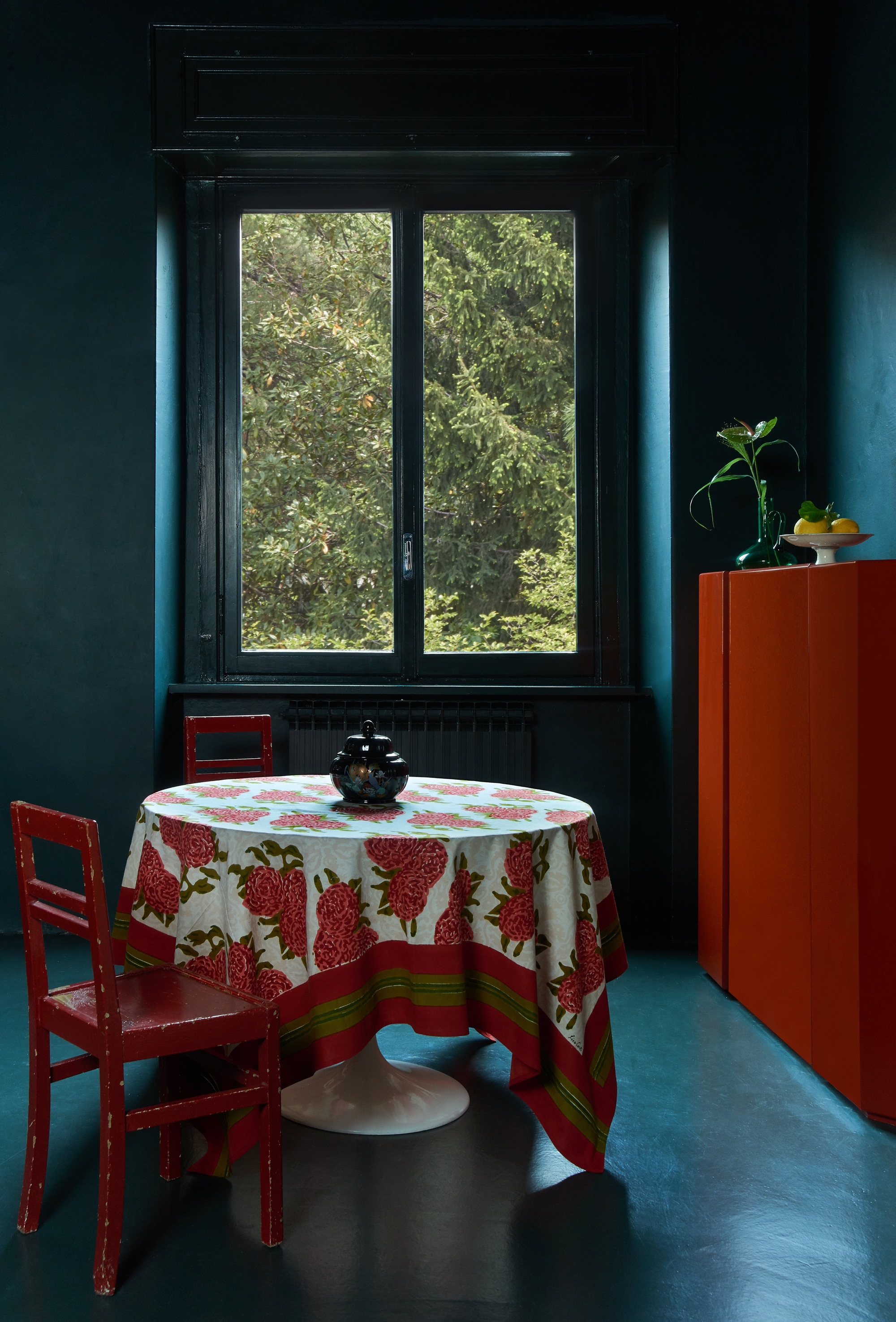
Again, it sounds so simple, but there are a couple of tricks to laying out your tablecloth on the table to make sure you get it just so. Find the appropriate size cloth to cover your table. For a standard 8ft table, go for 90" x 156" to make sure some of the tablecloth elegantly drapes down the side of the tables.
When you unfold your tablecloth, take care to unfold it on the table from the center of the table and out to the edges. Place the center fold facing up of the tablecloth down on the center of the table and fold outwards, making sure the folds are in line with the shape of the table, and any creases from the folds are in line with the table. Lastly, one of the best buys I've made for my dining table this year is these handy tablecloth clips from Walmart. They are so simple, discrete and help my well-placed tablecloth sit firmly in place.
Consider the material and color of your tablecloth, how it fits with the wider aesthetic of the room and the dining room colors. Simple is always good, and white can feel more formal and hotel-like. 'The color white always reflects clean and minimal,' says Ariel Vargas of Aryce Designs. 'You can create something on a white tablecloth and it will have you feel like the display or the concept of the setup is spacious.' Elsewhere, an off-white beige or neutral might feel more homely, and go for darker or richer colors for any Christmas feasts you might be hosting this festive season.
'No matter the occasion, always have a table runner laid out on your table to instantly elevate the room,' says Atelier Saucier founders, Nikki Reed and Staci Inspektor. 'We love runners that sit casually on a tabletop without a tablecloth and a long overhang on either end.' This less formal design approach creates a perfect everyday feel that can easily be dressed up or down based on the desired look.
4. Consider the plates
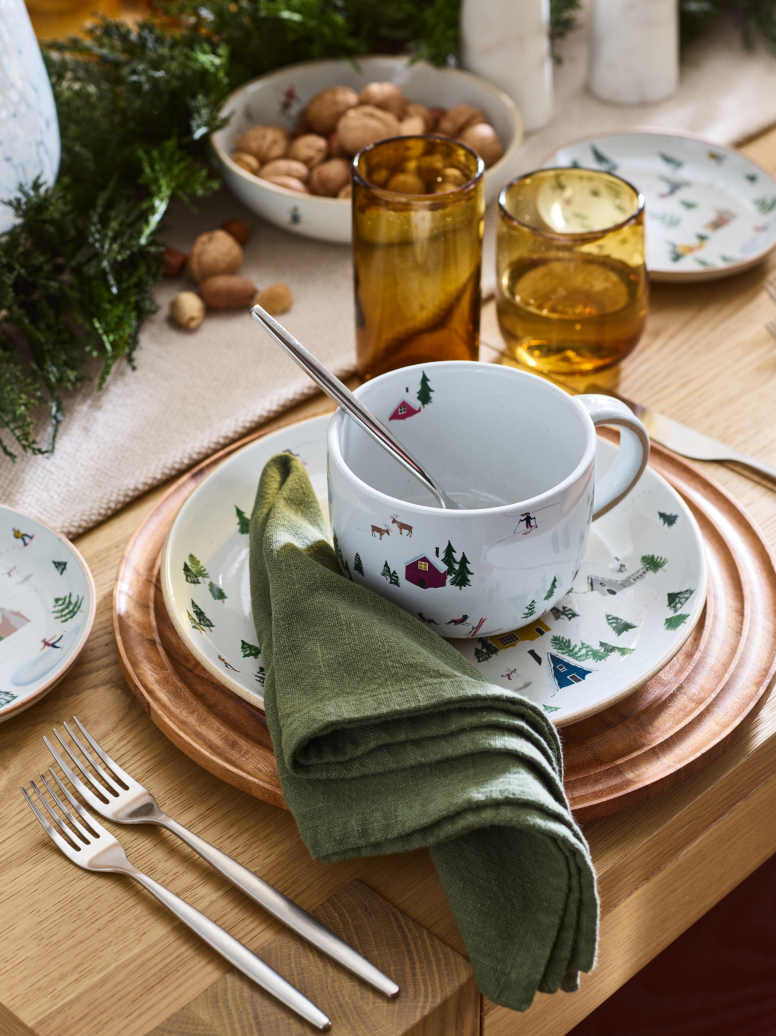
Think about the plates you put down too. While there is no longer a trend for plates to completely match, you do ideally want your dinner plates to be the same size around the table. The best dinnerware sets should include plates around 9", while side plates are around 6" or 7", with the butter knife sitting horizontally over your side plate, with the blade down. If you're serving a soup too, a soup bowl typically sits on your dinner plate and is removed once the course has been eaten.
Think about the aesthetic of the plate too. 'The days of having matching dish sets are over,' says Lindsey Smalley of Santa Rosa-based boutique tablescape company, 30A Tablescape Co. 'Play around with mixing and matching different colors and shapes.
'While we tend to still keep stoneware with stoneware, china with china, and ceramic with ceramic, we create variety by using different linen textures, mixing solid colors with patterns, and using varying silhouettes.' When your dishes make a statement, keep the centerpiece simple too.







